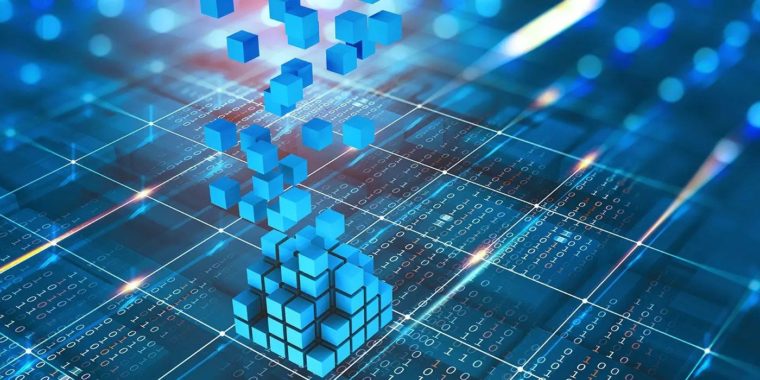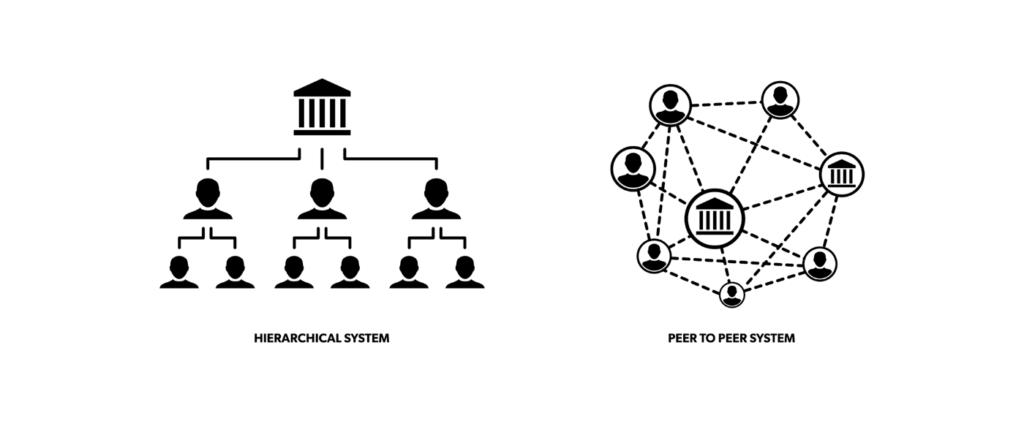
DAOs or Decentralised Autonomous Organisations operate with the principle of decentralisation at their core, so in order properly understand what DAOs are and why you should care about them, we need to get comfortable with this concept first.
If you’d rather watch the video I made on DAOs on decentralisation click here.
What is Decentralisation?
Decentralisation is an organisational system where planning and decision-making activities are distributed away from a central point of control.
However, the concept is not new. Decentralisation made its appearance in the Early 19th century France before spreading to the US in the 20th Century. It even had a small political movement behind it, with the people supporting it being referred to as Decentralists.
Decentralists were in fact anarchists and libertarians who were protesting large-scale industrial production and the destruction of small shop keepers and manufacturers. They would have probably been the first adopters of the blockchain in recorded history. Decentralists were not necessary against Capitalism, they were protesting concentrated and centralised pockets of power, from governments to big corporations an so on. The movement was created because no problem is too big to run away from, but centralisation came really close.
Decentralisation in government was seen as a solution to problems like economic decline and the general inability to provide basic public services. Thus, the Goals of Decentralisation are as follows: Participation, Diversity, Conflict Resolution and Efficiency. These concepts or benchmarks can also be used to determine the degree of decentralisation for any organisation.
There are, in fact, many levels of decentralisation. Take your local government for example but never as an example. Chances are you’re living in a democratic system with multiple political parties, where the different functions of the government are fulfilled by different institutions.
So, in a sense, the government itself is somewhat decentralised in a democratic system, when you compare this with a traditional Monarchy, where the King is the absolute ruler and their word is the law. But the government is still the central authority that rules over a territory, which makes this governing system democratic, and yet centralised. So from that perspective, no government is a DAO.
What is a DAO
A DAO, or a Decentralised Autonomous Organisation has no central leadership. At core, it’s an organisation that governs itself using a flat hierarchical structure.

You cannot pinpoint its decision makers because in a DAO, all of its members are involved in decision making in a fair and transparent manner. This creates a trustless environment, where its core principles are upheld by the rules written on the blockchain.
Decentralised Participation
It’s trustless because, unlike a centralised system, you do not need to “trust” the controllers of the system that they operate in good faith. – the blockchain enforces the rules and everyone participates in playing by them. Thus, covering the first goal of decentralisation that we mentioned before – Participation.
Diversity and Voting Rights
In a DAO, decision making is enforced by a smart contract, which is essentially an algorithm written on the blockchain, which sets out the rules of the DAO. Members of the DAO are then given voting rights, according to these rules.
For example, on the PolkaDot blockchain, coin holders are being given voting rights in accordance to the number of DOT they hold, and the locked staking duration. If you had 500 DOT and you locked them for a period of 4 weeks, you would have 500 votes. However, if your friend had 200 coins but locked them for a period of 16 weeks, they would have 600 votes. Although maybe not a DAO itself, PolkaDot’s on-chain governance system does seem to apply the main decentralisation principles.
This covers the second principle of Decentralisation – Diversity. In a DAO, you are encouraged to participate in its governance regardless of your location, status or how much coin you own.
Conflict Resolution in a DAO
With giving everyone voting rights, we come across one of the first challenges to creating a functional and efficient DAO.
The smart-contract that defines the rules of the DAO needs to be able to handle a Stalemate, no-show or any other situation where a decision cannot be made. Without a central authority to make a decision when the majority cannot agree on something, DAOs need to be able to natively handle conflict-resolution – the third principle of decentralisation. In addition to this, a DAO needs to be able to also discourage any bad-actors from proposing a malicious change in the organisation.
Efficiency in a DAO
When your blockchain can only compute 7 transactions per second – looking at your Bitcoin – you have an efficiency problem. Information is not propagated quickly enough over the network leading to inefficiency and sluggishness. While Bitcoin is technically a DAO, it’s not quite the same as what we actually mean by DAOs today which are usually backed up by a smart contract.
A DAO needs to be able to run efficiently, which partly ties in with conflict resolution, as well as speed of execution on the blockchain. A proof of stake mechanism, along with a well written smart contract, will, in most cases enable a DAO to run efficiently – thus covering the 4th pillar of decentralisation: Efficiency.
The future of DAOs
Although they are not perfect and likely to see their fair share of toxic applications like influencer DAOs (please don’t google this).
Right now, it seems like we’re testing the waters, with only 181 DAOs in total according to deepdao.io .
DAOs have become increasingly popular in the last few years, and their popularity is expected to grow and further develop. It’s likely that in the future we’ll start seeing even more creative applications for DAOs, which are yet leave their mark on our shiny, new and decentralised Web3. The idea of decentralised organisations can expand beyond the crypto space and into other areas, including the most studied application of decentralisation: Decentralised Governments – something I’d be particularly excited to see.
